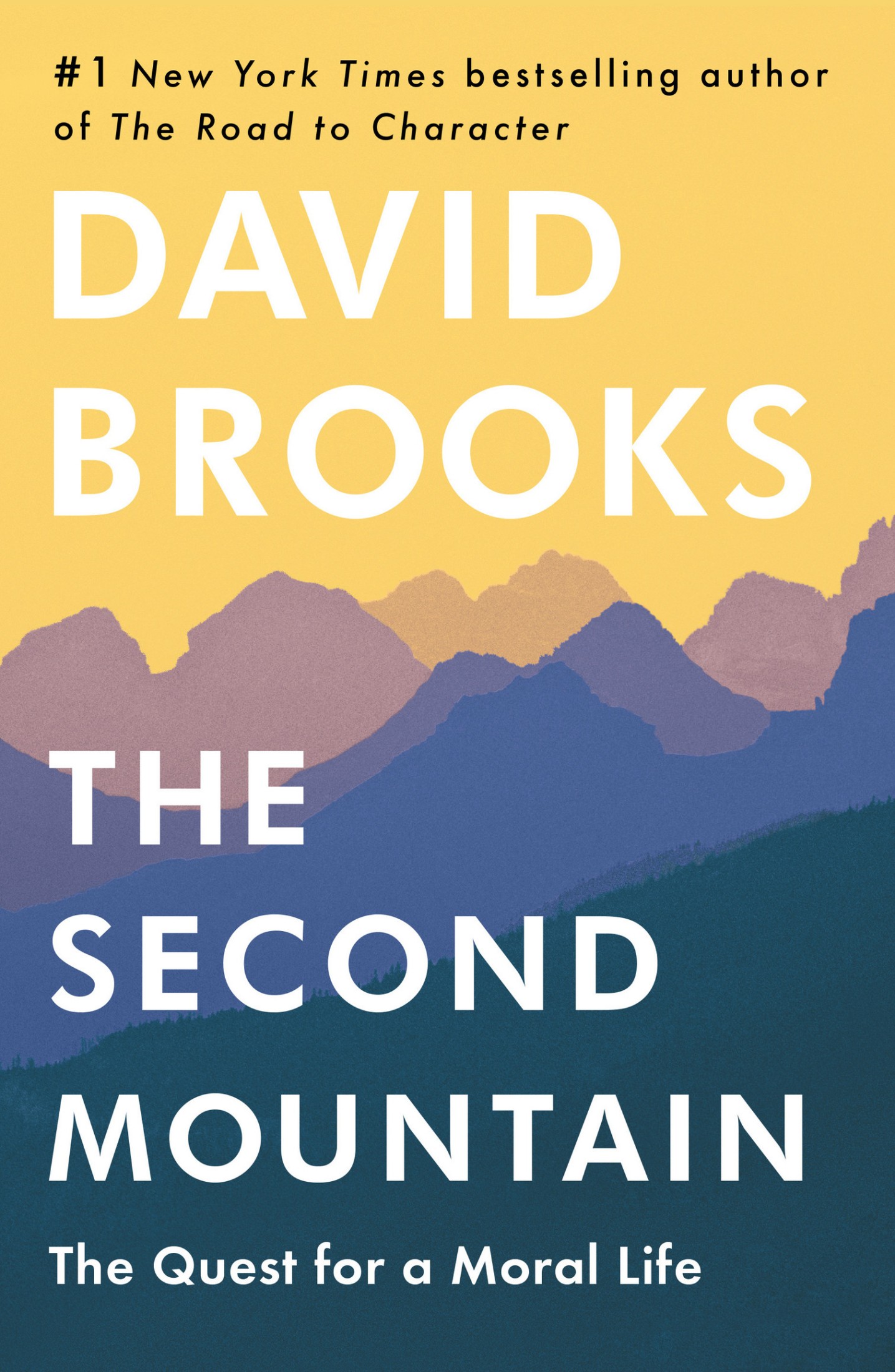【橘猫推书】
The Second Mountain: The Quest for a Moral Life
by David Brooks

ONE: Moral Ecologies
When I was a young TV pundit, I worked with Jim Lehrer, who cofounded a program that is now called the PBS NewsHour. When Jim was on the air and delivering the news, his face tended to be warm but stoical, because he did not think he should be the story; the news should be the story. But when the camera was not on him, his face was incredibly expressive. When I was talking on our segment and I said something cheap or crass, I would see his mouth turn down in displeasure. But when I said something that was useful, civil, or amusing, I would see his eyes crinkle with pleasure. For ten years, working with a man I deeply admired, I tried to behave in a way that would produce the eye crinkle and not the mouth downturn.
Lehrer never had to formally tell me how to behave, but in this subtle and wordless way, he trained me to meet the NewsHour standards of what is right. And he didn't offer these reactions just to me; he offered them to everyone on staff, show after show, year after year. In this way, he created the NewsHour way of being, a moral ecology in which certain values were prioritized, and certain ways of being expected. It's been several years since Lehrer retired, but the culture he instilled still defines the NewsHour today.
We all grew up in one moral ecology or another. We all create microcultures around us by the way we lead our lives and the vibes we send out to those around us. One of the greatest legacies a person can leave is a moral ecology—a system of belief and behavior that lives on after they die.
Some moral ecologies are local, in a home or office, but some are vast and define whole eras and civilizations. The classical Greeks and Romans had their honor code with its vision of immortal fame. In the late nineteenth century, Parisian artists invented a bohemian code celebrating individual freedom and wild creativity, while across the Channel, Victorian morality was beginning to form, with its strict codes of propriety and respectability. Moral ecologies subtly guide how you dress, how you talk, what you admire and disdain, and how you define your ultimate purpose.
Moral ecologies are collective responses to the big problems of a specific moment. For example, around the middle third of the twentieth century, people in the Northern Hemisphere faced a great depression and a cataclysmic world war. Big problems required big institutional responses. People joined armies, formed unions, worked at big companies. They bonded tightly together as warring nations. Therefore, a culture developed that emphasized doing your duty, fitting into institutions, conforming to the group, deferring to authority, not trying to stick out or get too big for your britches. This group-oriented moral ecology could be summed up by the phrase “We're All in This Together.”
The spirit of this culture was nicely captured in a book by Alan Ehrenhalt called The Lost City, about some of the communities around and in Chicago in the 1950s. There wasn't a lot of emphasis put on individual choice back then. If you were a star baseball player like Ernie Banks, you didn't have the option of becoming a free agent. You spent your career as a Chicago Cub. If you had the wrong accent or the wrong skin color or were the wrong gender, you probably couldn't get a job at one of the fancy office buildings downtown. But people back then tended to have steady attachments and a stable connection to place. They did their duty for their institutions.
